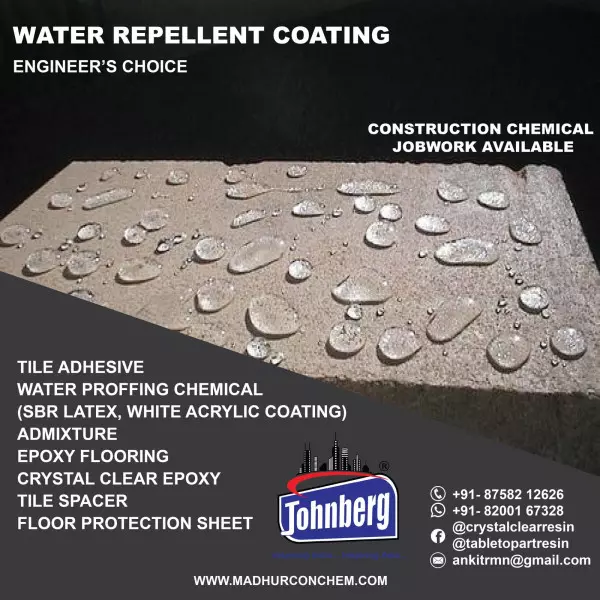Water Repellent Coating Service In Kochi
Details of Water Repellent Coating
Water repellent coatings are surface treatments designed to make materials resist the absorption or penetration of water. They are widely used in construction, textiles, automotive, electronics, and packaging industries to protect materials from water damage, increase longevity, and maintain appearance.
Key Characteristics of Water Repellent Coatings
Hydrophobicity: Ability to repel water by creating a surface with low surface energy.
Durability: Resistance to washing, abrasion, UV exposure, and chemicals.
Breathability (in some types): Allows water vapor to pass through while blocking liquid water (important in clothing and construction).
Transparency or Opacity: Available in clear or pigmented versions.
Types of Water Repellent Coatings
Type Main Ingredients Common Applications
Silicone-based Polysiloxanes, siloxane resins Textiles, masonry, glass, leather
Fluoropolymer-based PTFE, PVDF, or short-chain fluorocarbons Outdoor gear, electronics, automotive
Nanocoatings Silica nanoparticles, titanium dioxide Smartphones, solar panels, optics
Wax-based Natural or synthetic waxes Wood, leather, canvas
Acrylic or polymer coatings Acrylic resins, polyurethane Concrete sealers, paints, coatings
Applications
Construction & Masonry
Applied to bricks, concrete, and stone to prevent moisture ingress and reduce cracking.
Improves freeze-thaw resistance.
Textiles & Apparel
Used in raincoats, tents, and upholstery to prevent wetting and staining.
Often combined with breathable membranes (like Gore-Tex).
Automotive Industry
Windshields (e.g., Rain-X), car paint protection films, and convertible roofs.
Helps reduce dirt accumulation and corrosion.
Electronics
Thin hydrophobic layers protect circuit boards and devices from humidity and water immersion.
Wood and Leather Treatment
Prevents rot, mold, and warping.
Application Methods
Spray: Common for textiles, electronics, and masonry.
Brush or roller: Often used on construction surfaces like concrete or wood.
Dip coating: For small items and electronics.
Plasma deposition / Chemical Vapor Deposition (CVD): For high-performance nanocoatings.
Performance Metrics
Contact Angle: Measures how much water beads up; >90° indicates hydrophobicity.
Water Absorption Rate: Lower values are better.
Abrasion Resistance: Indicates how well the coating lasts under wear.
UV Stability: Important for outdoor applications.
Environmental & Health Considerations
Older long-chain fluorocarbons (PFCs like C8) are being phased out due to environmental and health risks.
Alternatives like C6 fluorocarbons, silicone-based, or bio-based repellents are gaining popularity.
VOC emissions and biodegradability are critical factors in eco-friendly products.

